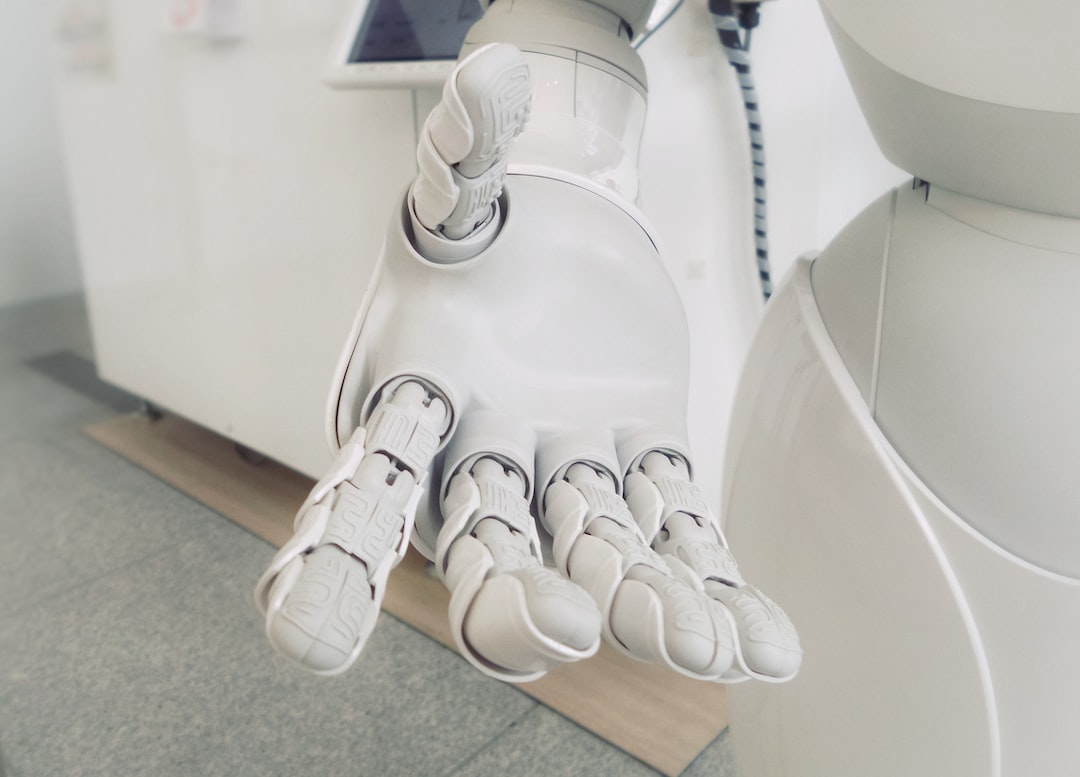The use of robotic floor scrubbers for facility maintenance offers numerous advantages over traditional cleaning methods. One of the key benefits is increased efficiency and productivity. Robotic floor scrubbers can cover large areas in a fraction of the time it would take for manual cleaning. This allows facility managers to allocate their resources more effectively and focus on other important tasks.
In addition to increased efficiency, robotic floor scrubbers also improve the overall cleanliness and hygiene of a facility. These machines are equipped with powerful brushes and suction systems that can effectively remove dirt, stains, and grime from floors. They also have the ability to sanitize surfaces, ensuring a hygienic environment for employees and visitors.
Furthermore, robotic floor scrubbers are designed to operate quietly, minimizing disruptions in the facility during cleaning operations. This is particularly beneficial in environments such as hospitals, schools, and offices where noise levels need to be kept to a minimum.
The Different Types of Commercial Floor Cleaning Equipment Available
When it comes to commercial floor cleaning equipment, there are various options available, ranging from traditional methods to robotic solutions. Traditional methods include mops, brooms, and manual scrubbers. While these methods have been used for decades, they are often time-consuming and labor-intensive.
On the other hand, robotic floor scrubbers offer a more advanced and efficient approach to floor cleaning. These machines come in different sizes and configurations to suit various facility types and sizes. Some robotic floor scrubbers are designed for small spaces, such as offices and retail stores, while others are capable of cleaning large areas like warehouses and factories.
Industrial Robotic Cleaning Machines: How They Work and Their Features
Industrial robotic cleaning machines are specifically designed for large-scale cleaning projects in industrial settings. These machines are equipped with advanced features that enable them to navigate complex environments and efficiently clean large areas.
One of the key features of industrial robotic cleaning machines is their sensors. These sensors allow the machines to detect obstacles and adjust their path accordingly, ensuring safe navigation. Some machines also have mapping technology that allows them to create a virtual map of the facility, enabling them to plan the most efficient cleaning routes.
Industrial robotic cleaning machines also come with powerful brushes and suction systems that can effectively remove dirt, stains, and grime from floors. They are designed to handle heavy-duty cleaning tasks and can withstand harsh environments commonly found in industrial settings.
The Benefits of Using Industrial Robotic Cleaning Machines for Large-Scale Cleaning
Industrial robotic cleaning machines offer several benefits when it comes to large-scale cleaning projects in warehouses and factories. One of the key advantages is increased speed and efficiency. These machines can cover large areas in a fraction of the time it would take for manual cleaning. This allows facility managers to save time and allocate their resources more effectively.
In addition to increased speed, industrial robotic cleaning machines also ensure thorough and consistent cleaning. These machines are programmed to follow a specific cleaning pattern, ensuring that every inch of the floor is cleaned. This eliminates the risk of human error and ensures a high level of cleanliness and hygiene in the facility.
Moreover, industrial robotic cleaning machines can operate in challenging environments, such as areas with heavy machinery or uneven surfaces. They are designed to navigate obstacles and adjust their cleaning path accordingly, ensuring safe and efficient cleaning operations.
The Cost Savings of Using Robotic Floor Scrubbers for Facility Maintenance
Using robotic floor scrubbers for facility maintenance can result in significant cost savings for businesses. One of the main cost-saving factors is reduced labor costs. Robotic floor scrubbers eliminate the need for manual labor, allowing facility managers to allocate their workforce to other important tasks. This not only saves on labor costs but also increases overall productivity.
Furthermore, robotic floor scrubbers are designed to be highly efficient and effective in cleaning. They can cover large areas in a short amount of time, reducing the overall cleaning time required. This allows businesses to save on operational costs, such as electricity and water usage.
Additionally, robotic floor scrubbers require minimal maintenance compared to traditional cleaning equipment. They are built to withstand heavy-duty use and are less prone to breakdowns or malfunctions. This reduces the need for frequent repairs or replacements, resulting in long-term cost savings for businesses.
The Importance of Regular Maintenance of Robotic Floor Scrubbers

While robotic floor scrubbers require minimal maintenance compared to traditional cleaning equipment, regular maintenance is still crucial to ensure optimal performance and longevity. Regular maintenance includes tasks such as cleaning the brushes and filters, checking for any wear and tear, and ensuring that all sensors and mapping technology are functioning properly.
Regular maintenance not only ensures that the robotic floor scrubbers continue to operate at their best but also helps prevent any potential issues or breakdowns. By addressing any minor issues early on, facility managers can avoid costly repairs or replacements in the future.
Moreover, regular maintenance helps extend the lifespan of the robotic floor scrubbers. These machines are a significant investment for businesses, and by properly maintaining them, facility managers can maximize their return on investment and ensure that they continue to deliver efficient and effective cleaning results.
The Safety Features of Industrial Robotic Cleaning Machines
Safety is a top priority when it comes to using industrial robotic cleaning machines. These machines are equipped with various safety features to ensure the well-being of both the operators and other individuals in the facility.
One of the key safety features is collision avoidance technology. Industrial robotic cleaning machines are equipped with sensors that can detect obstacles in their path and adjust their route accordingly. This helps prevent accidents and collisions with objects or individuals in the facility.
Furthermore, industrial robotic cleaning machines are equipped with emergency stop buttons that allow operators to quickly halt the machine’s operation in case of an emergency. This ensures that immediate action can be taken to prevent any potential accidents or injuries.
Additionally, some industrial robotic cleaning machines have built-in safety protocols that allow them to operate in areas with restricted access. These protocols ensure that the machines only clean designated areas and do not pose any safety risks to individuals in the facility.
The Future of Facility Maintenance: How Robotic Floor Scrubbers Will Revolutionize the Industry
The use of robotic floor scrubbers is set to revolutionize the facility maintenance industry in the future. These machines offer numerous benefits that can significantly improve efficiency, productivity, and cost savings for businesses.
One of the key impacts of robotic floor scrubbers is increased efficiency. These machines can cover large areas in a fraction of the time it would take for manual cleaning. This allows facility managers to allocate their resources more effectively and focus on other important tasks, ultimately improving overall operational efficiency.
Moreover, robotic floor scrubbers can enhance productivity in the facility maintenance industry. By automating the cleaning process, these machines eliminate the need for manual labor and allow facility managers to optimize their workforce. This results in increased productivity and allows businesses to achieve more with fewer resources.
Furthermore, the use of robotic floor scrubbers can lead to significant cost savings for businesses. As mentioned earlier, these machines reduce labor costs, operational costs, and maintenance costs. This allows businesses to allocate their budget more effectively and invest in other areas of their operations.
The Benefits of Adopting Robotic Floor Scrubbers for Facility Maintenance
In conclusion, the adoption of robotic floor scrubbers for facility maintenance offers numerous benefits for businesses. These machines provide increased efficiency and productivity, improve cleanliness and hygiene, and result in significant cost savings.
By revolutionizing the cleaning process, robotic floor scrubbers allow facility managers to optimize their resources and focus on other important tasks. They also ensure thorough and consistent cleaning, improving the overall cleanliness and hygiene of the facility.
Moreover, robotic floor scrubbers offer long-term cost savings by reducing labor costs, operational costs, and maintenance costs. They are a valuable investment for businesses looking to improve efficiency and productivity while maintaining a clean and hygienic environment.
Overall, the future of facility maintenance lies in the adoption of robotic floor scrubbers. These machines have the potential to revolutionize the industry by offering a more efficient, effective, and cost-saving solution to floor cleaning.
If you’re interested in learning more about the latest advancements in robotic floor scrubbers, you won’t want to miss this informative article from Floorbotics. They have a comprehensive sitemap that includes a wide range of articles and resources related to robotic floor scrubbers. One article that caught my attention is “The Future of Cleaning: How Robotic Floor Scrubbers Are Revolutionizing the Industry.” This article dives deep into the benefits and features of these innovative machines, highlighting how they are transforming the way we clean our floors. To read this fascinating article, click here.
FAQs
What is a robotic floor scrubber?
A robotic floor scrubber is a machine that is designed to clean floors automatically. It uses sensors and programming to navigate around a space and scrub the floor with brushes or pads.
How does a robotic floor scrubber work?
A robotic floor scrubber uses sensors to detect obstacles and map out the space it needs to clean. It then uses brushes or pads to scrub the floor and suction to remove the dirty water.
What are the benefits of using a robotic floor scrubber?
Using a robotic floor scrubber can save time and labor costs, as it can clean floors automatically without the need for human intervention. It can also improve cleaning efficiency and reduce the risk of slip and fall accidents.
What types of floors can a robotic floor scrubber clean?
A robotic floor scrubber can clean a variety of floor surfaces, including tile, concrete, and vinyl. Some models are also designed to clean carpets.
How much does a robotic floor scrubber cost?
The cost of a robotic floor scrubber can vary depending on the model and features. Prices can range from a few thousand dollars to tens of thousands of dollars.
What maintenance is required for a robotic floor scrubber?
Regular maintenance is required for a robotic floor scrubber, including cleaning the brushes and pads, emptying the dirty water tank, and replacing worn parts. Some models also require battery replacement or charging.

